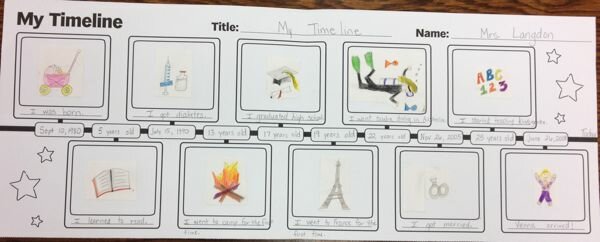
In the process, culling from the many possible dates sharpens ones appreciation for the dates necessarily excluded. Thus, making a timeline allows one to plot events in a graphic way, to see possible relationships, to help memory, and to grasp sequence. Thematic timelines suggest turning points, linear trends, and progressions, whether or not these exist in fact. They suggest that events exist in relationship to one another, in a context. Sequences in a timeline, where some events happen before others, also suggest the possibility of cause and effect. Portrayed in a line, events are unique in history and do not repeat themselves in exact ways. The direction says that time and history proceed in a line, not a circle. We make a sequence that suggests a past, present, and future. When we make a timeline of historical events, we create a graphic representation of how we in Western secular society think about time. Western historical thought is based on certain assumptions about the nature of time. Over the eons, different cultures and peoples have held different beliefs about the nature of time.

This mark will represent the day your child was born.
/MyLifeTimeline-56a5669a5f9b58b7d0dca955-5984b639519de20011fb82fc.jpg)
Lay the piece of butcher paper on a hard work surface.Your child can always draw an illustration of an event. Look through the photos together to try to find one to match each index card, but don’t stress if there isn’t one.Providing her with the month and year will be a big help in putting her personal history in order. If your child has trouble remembering which events came before others, help her identify when things happened.Now, ask her to put the events in sequence according to when they happened, starting with the oldest (birth date) on the left and working toward the most recent on the right. When she’s finished coming up with events, have her place all the index cards on the floor or a table.The last card might say, "Made a My Life Timeline!" Complete this process up to the present day.Ask her to write down the events and describe them, one on each index card, without worrying about whether they are in order. Prompt her to think about things such as brothers or sisters being born, first days of school, and family vacations. Challenge her to think of other days in her life that were important in her personal history.

Then, have her label the card with a phrase such as "Today, I was born!" Tell her what day of the week she was born on and the time if you know it, and ask her to add that information to the index card. Have her write her date of birth on an index card. Provide your child with index cards and ask her to help you think about moments in life that are most important or memorable to her.


 0 kommentar(er)
0 kommentar(er)
